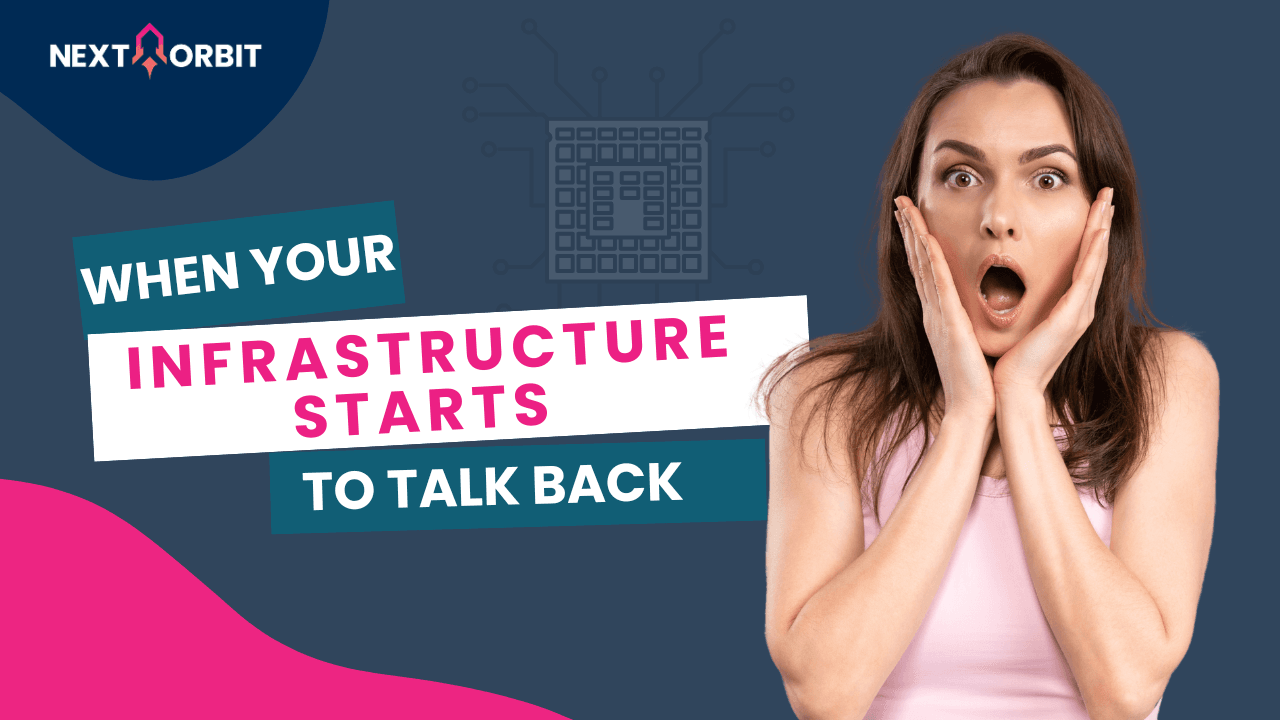Imagine this: It’s Monday morning. You’ve just walked into the office, coffee in hand, brain buzzing with a new idea you’ve been thinking all weekend. You sit down, start your system, crack your knuckles, and then…nothing. Your system sits there like a sullen teenager, refusing to tell you what’s wrong, why your deployment failed, or what it needs from you to cooperate. No clues, no hint, nothing.
Sounds very familiar?
Now let me blow your mind: We live in a world where AI writes poetry, cloud systems span the globe, and containers autoscale like digital symphonies. Yet our infrastructure, the very thing underpinning it all, communicates with us like it’s stuck in the Stone Age.
Seriously! Your pet dog is better at communication than your million-dollar server stack. When your dog wants to go out, it gives you signals: the leash, the eyes, the tail. Your dog talks through behaviour. But your infrastructure? It throws up cryptic error codes and hopes you’ll figure it out.
This is what I call the Great Infrastructure Paradox: We’ve created incredibly smart systems that are surprisingly dumb at talking to us.
But we’re standing on the edge of something extraordinary, a moment in history when infrastructure is about to get a voice. And once that happens, our entire relationship with technology will change.
The Mind-Bending Truth About Infrastructure Communication
What if your Kubernetes cluster could actually talk to you? Not just through logs and dashboards, through have their place, but also in the same intuitive way humans naturally communicate?
Let’s be honest: Debugging a failed deployment feels like digging through digital dirt. You comb through logs, compare timestamps, and hope to uncover what went wrong for hours.
Now imagine a system that says, “Hey! Your deployment just failed. You tried to allocate GPU resources, but current policies restrict GPU use to machine learning workloads. Want me to show you how to optimize this for CPU, or tag it for GPU approval?”
This isn’t science fiction. This is the inevitable future we’re building toward, and it represents a fundamental shift in how humans and machines communicate. Not just to inform, but to collaborate.
Teaching Machines to Think Out Loud
Let’s simplify this. Think of infrastructure like a language.
Infrastructure as Code becomes the vocabulary – systems can speak intelligently about their configuration and capabilities because they understand their architecture.
Policy engines become the grammar – They provide the rules and context that allow infrastructure to make intelligent recommendations.
AI and Natural Language Processing – They’re the translators, turning arcane technical realities into everyday human speech.
When you combine these three elements, something magical emerges: Infrastructure that doesn’t just execute commands but participates in problem-solving.
Your Infrastructure: From Tool to Teacher
Here’s a twist. Conversational infrastructure doesn’t just fix problems. It teaches you why the problem happened.
Imagine it saying, “I optimized your connection polling to reduce overhead. Here’s how that helps your service survive traffic spikes…”
Or
“This configuration exposes internal services publicly. Let me guide you through a safer API gateway model.”
Suddenly, your infrastructure isn’t just obedient, it’s educational. It’s not just running your code, it’s helping you become a better engineer.
When Infrastructure Becomes Your Mentor
Here’s perhaps the most profound shift: conventional infrastructure doesn’t just solve immediate problems, it becomes an educational partner.
Instead of silently applying best practices, it explains them: “I’m optimizing your database connection pooling. This will reduce connection overhead by about 40%, but more importantly, it’ll make your service more resilient during traffic spikes.
Instead of enforcing security policies, it teaches security thinking: “I’m blocking this configuration because it exposes internal services to the public internet. Would you like me to show you how to achieve the same functionality using an API gateway pattern?”
The infrastructure becomes not just a platform for running code, but a platform for growing expertise.
AI – The Amplifier of Human Potential
Artificial intelligence doesn’t just make this conversational infrastructure possible; it makes it profoundly more powerful than traditional approaches.
It connects dots you didn’t know existed.
But here’s the crucial insight: the goal isn’t to replace human decision-making with AI decision-making. It’s to create a three-way collaboration between human creativity, AI pattern recognition, and infrastructure capability.
The Silent Revolution Already Happening
Think this is some distant dream? Think again. Leading teams are already building it. They’re building infrastructure that talks, thinks, and teaches.
Your Infrastructure Want to Talk
Here’s the ultimate truth: your infrastructure wants to collaborate with you. It’s packed with information, capabilities, and potential solutions.
When we give infrastructure a voice, when we engineer systems that can explain their decisions, ask clarifying questions, and suggest improvements, we’re not just making technology more convenient. We’re unlocking a new form of human-machine collaboration that amplifies both human creativity and computational power.
The question isn’t whether your infrastructure will learn to speak. The question is: when it does, will you be ready to listen?
And that, my friends, changes everything.

